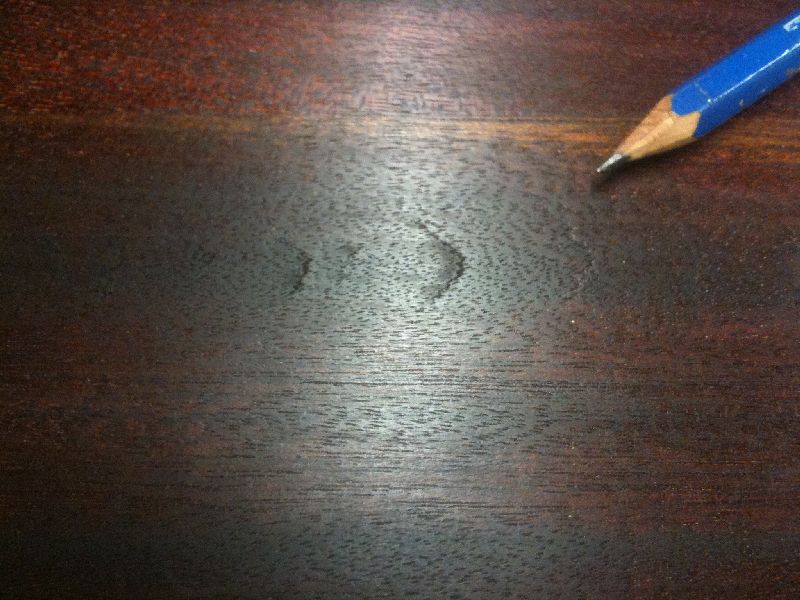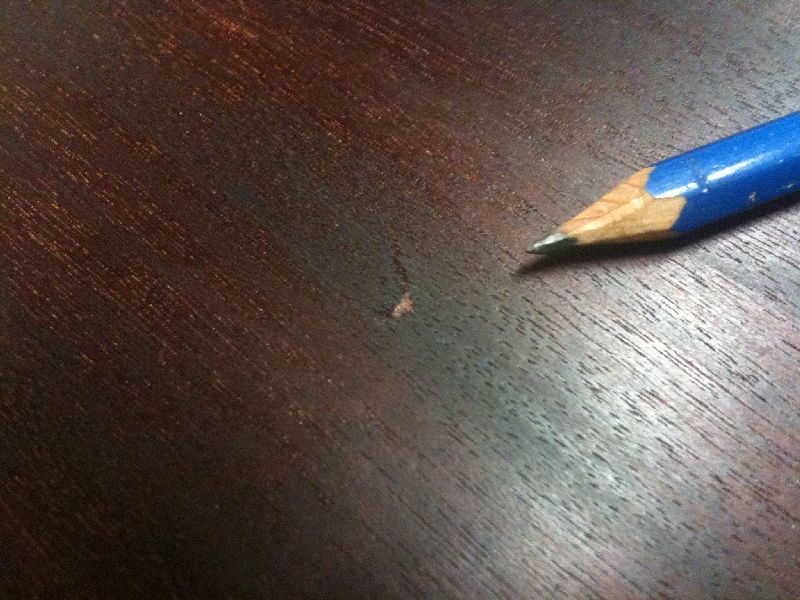Question
I just finished applying several coats of Danish oil to a set of sapele nightstands, and there are several small cracks that I need to fill/repair. I can't wet sand the cracks out; I used potassium dichromate to darken the wood and I'm afraid I will sand through the color. I've already wet sanded at 600 grit to fill some of the pores. Is there a suitable method of repair? Putty sticks? Can I apply a clear grain filler over top of the oil finish? I plan on applying at least one more coat of oil to the pieces.


Forum Responses
(Finishing Forum)
From contributor R:
Since you're using an oil/varnish mix, just use a coarser grit to get the surface prepped and then use K 2 Cr 2 O 7 and color again, if needed, and use the touchup pens to fine tune, then cover with some thinned varnish to seal the color coat. Then apply a couple more coats of your oil/varnish finish. RO if needed.
And of course your chemical stain will get lighter with a bit of sanding, which you want to keep very minimal. I'd scrape with a flexible razor blade when flushing the repair.
Have just done a load of potassium dichromate colouring to oak and mahogany, and know that reapplying it locally around previously treated wood is a tricky business.
This defect is the effect of bacterial activity in the tree that weakens the wood and results in shake. This occurs in probably all species, although I have never seen it in sapele before. The problem is that the cracks will actually be fairly deep within the wood at times, so you need to do more than cover them. In fact, with the drying out during the wintertime, you can expect to see a few more. I hate to say this, but in my experience with this defect, replacement of the troublesome pieces is the ultimate cure. The good news is that this defect is limited to a certain area and to certain trees, so it will go away on its own when you range lumber supplies.
In softwoods with big differences in density and color within an individual ring, this defect is also caused by excessive pressure when machining, dull knives, low MCs, and so on.